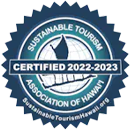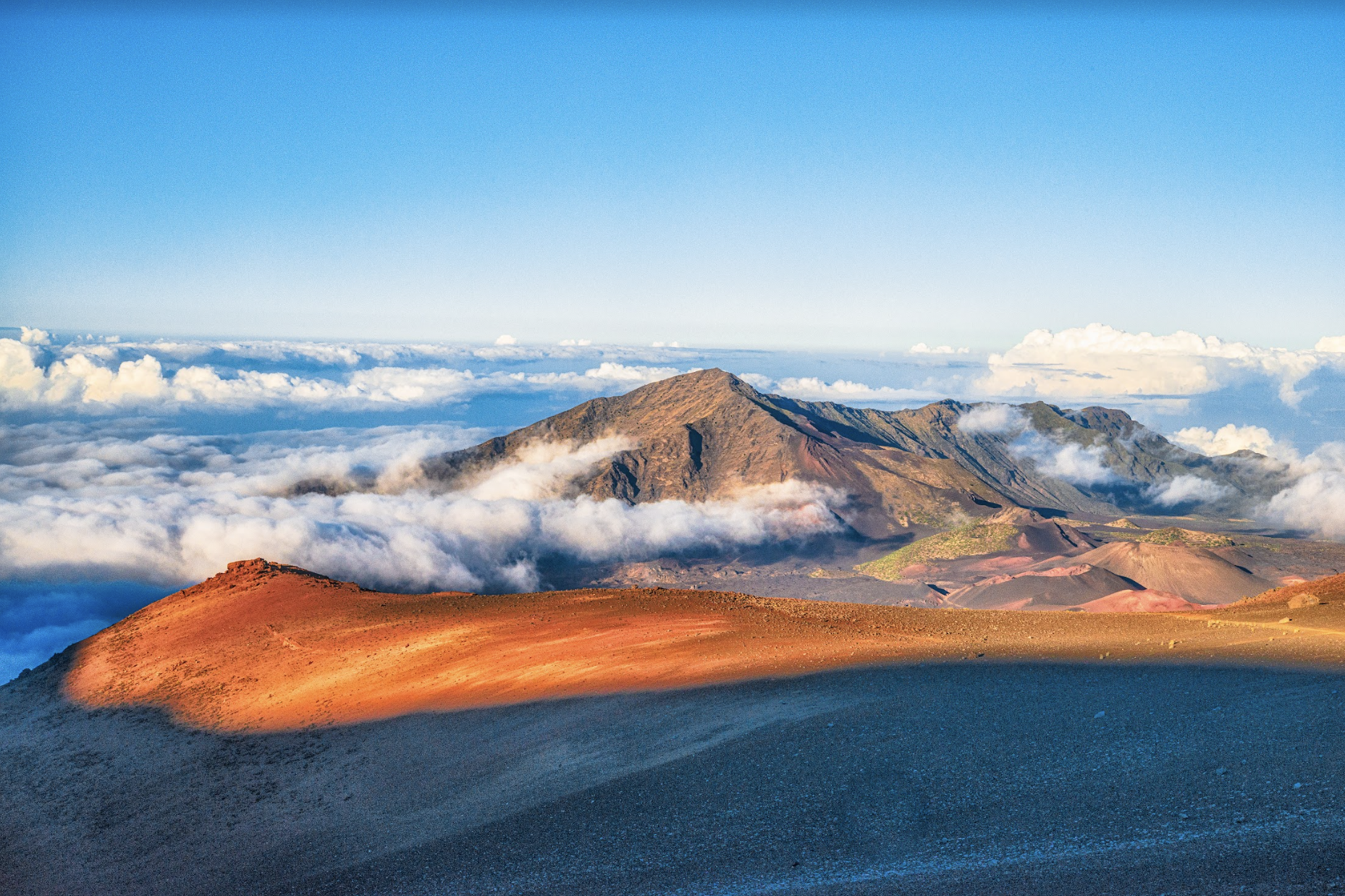
Maui Travel Guide – Hawaiʻi in October
October is a great time to visit Maui. It falls within the shoulder season, meaning you’ll find fewer crowds and potentially lower prices compared to the peak summer months, but still enjoy warm, pleasant weather and calm ocean conditions perfect for snorkeling and other water activities. The weather is typically warm, with daytime temperatures in the mid-80s°F, and the famous trade winds that can make the ocean choppy in the summer start to ease up.
Here’s a more detailed look at what makes October a good time to visit Maui:
Maui Weather:
- Warm and pleasant: Average temperatures range from the low 70s to the mid-80s, making it ideal for beach days and outdoor adventures.
- Calm ocean conditions: The trade winds that can make the ocean choppy during the summer start to die down, leading to calmer waters perfect for snorkeling, swimming, and other water sports, according to Maui Snorkel Tours.
- Last month of the dry season: October is the last chance to experience the dry season weather before the wetter winter months begin, according to The Historic Wailuku Inn.
Crowds and Prices:
- Fewer crowds: October is part of the shoulder season, so you’ll encounter fewer tourists than in the summer, according to Hawaii Guide.
- Lower prices: With fewer crowds, you may find better deals on flights and accommodations, according to The Hawaii Vacation Guide.
Maui Activities:
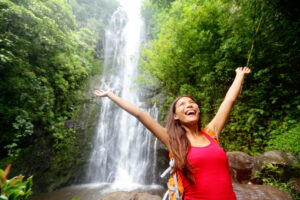
- Snorkeling and diving: The calm ocean conditions make it ideal for snorkeling and diving, especially at popular spots like Molokini Crater.
- Hiking: October’s pleasant weather is perfect for exploring Maui’s hiking trails, including Haleakala National Park.
- Beaches: Enjoy the beautiful beaches of Wailea and Kaanapali with calm waters and soft sand.
- Cultural events: Check out the Hawaii Food and Wine Festival, which often has events on Maui in October, notes Hawaii Guide.
- Kula Country Farms Pumpkin Patch: Visit the farm for Halloween decorations, pumpkin picking, and photo opportunities.
Experience the Famous Haleakalā Sunrise Tour
Checklist for Maui in August
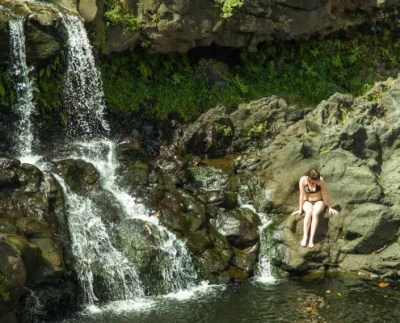 For a trip to Maui in October, pack lightweight, breathable clothing like shorts, t-shirts, and swimwear, along with a light jacket or sweater for cooler evenings. Don’t forget sun protection (sunscreen, sunglasses, hat), comfortable shoes, and a reusable water bottle. A waterproof phone case and a daypack for excursions are also recommended.
For a trip to Maui in October, pack lightweight, breathable clothing like shorts, t-shirts, and swimwear, along with a light jacket or sweater for cooler evenings. Don’t forget sun protection (sunscreen, sunglasses, hat), comfortable shoes, and a reusable water bottle. A waterproof phone case and a daypack for excursions are also recommended.
Clothing:
- Lightweight, breathable clothing: Shorts, t-shirts, tank tops, sundresses.
- Swimwear: Swimsuits, rash guard with UPF, swim cover-up.
- Casual evening wear: A light dress or skirt, khakis, light sweater.
- Hiking attire: Long pants, long-sleeved shirt, and sturdy hiking shoes.
- Activewear: For workouts or active pursuits.
- Underwear and sleepwear: Pack accordingly.
Sun Protection:
- Reef-safe sunscreen: Essential for protecting marine life.
- Sunglasses: Protect your eyes from the strong Hawaiian sun.
- Sun hat: Wide-brimmed hats are ideal for keeping the sun off your face and neck.
- Sun-protective clothing: Consider clothing with built-in UPF protection.
Shoes:
- Slippers: Perfect for casual wear and the beach.
- Comfortable sandals: For walking around town and light activities.
- Sturdy hiking shoes: If you plan on hiking.
Other Essentials:
- Reusable water bottle: Stay hydrated in the warm weather.
- Light jacket or sweater: For cooler evenings or air-conditioned spaces.
- Beach towel or quick-dry towel: For beach days and water activities.
- Daypack: For hikes, excursions, or carrying essentials.
- Waterproof phone case: Protects your phone from water damage.
- Camera or smartphone: For capturing the beautiful scenery.
- Insect repellent: For protection against mosquitoes and other bugs.
- Small backpack or tote bag: For carrying items while exploring.
- Hawaii guidebook: To help you navigate and discover hidden gems.
Optional Items:
- Snorkel gear: If you plan on snorkeling.
- Underwater camera or phone case: For capturing underwater photos.
- Binoculars: For whale watching (if visiting in whale season, which starts in November).
- Travel adapter: If your devices use a different plug type.
- First-aid kit: For minor injuries.
- Reusable shopping bags: For groceries and souvenirs.
- Chopsticks or metal utensils: For reducing single-use plastic.
- Cash: While credit cards are widely accepted, it’s good to have some cash on hand.
Learn more on the Road to Hāna
Travel Pono
We want to help you do those things “pono” (in the right way).
Our Commitment:
“To impart to our guests a genuine understanding of the aloha spirit and help them to travel pono by fostering care and respect for our community, environment and host culture.”
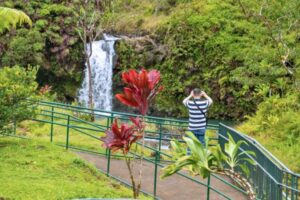 The Hawaiian culture is all about sharing. Sharing from ancient times through to recent history, they have shared to such an extent that they’ve given almost everything they had, including their lives. We all want Hawaiian culture to grow and thrive again. Simply feeling the aloha and expressing it shows respect for the culture, and helps it grow stronger. A resident shows respect to a visitor by sharing aloha and welcoming the visitor by returning a friendly wave. The honor system is alive and well at most fruit stands across East Maui due to the trust the residents have in the visitors.
The Hawaiian culture is all about sharing. Sharing from ancient times through to recent history, they have shared to such an extent that they’ve given almost everything they had, including their lives. We all want Hawaiian culture to grow and thrive again. Simply feeling the aloha and expressing it shows respect for the culture, and helps it grow stronger. A resident shows respect to a visitor by sharing aloha and welcoming the visitor by returning a friendly wave. The honor system is alive and well at most fruit stands across East Maui due to the trust the residents have in the visitors.
A visitor can reciprocate this trust and kindness by learning about a few things that can make life better for the area’s residents. Simple things, like driving according to road conditions and pulling off to let resident drivers go ahead is always a kind gesture. No one wants to have to constantly deal with trespassers, (especially the intentional ones), or badly parked vehicles – and that applies to anywhere in the world. Think about your actions as if it was your backyard. How would you want visitors to act towards you and your property? Now you know what is pono. Simply treat others as you would like to be treated and aloha will rule the day.
Keep in mind that residents need to go places too. Please move off the road if you decide to slow down or stop for a photo op or any other purpose, including, (but not limited to): standing in the road while picture taking; while driving a lot slower just to take a longer look (AKA: being a “looky loo”) or attempting to park. Make sure you’re completely off the road no matter why you’re stopping. Getting run into – or worse, getting run over, on what was supposed to be your “best day on Maui”, can turn even the best vacation into your worst nightmare.
Please don’t ignore any road signs. They are there for a good reason and visitors are asked to follow them for their own safety and the safety of the residents.
Things You Should Remember To Do to Share Your Aloha
Driving & Residents
Driving can be frustrating, no matter where you’re from, but island driving has it’s own challenges. Most roads in Maui were built over 100 years ago, during the heyday of the sugarcane industry, from little more than dirt pathways. Constant upgrades (widening & lane additions) have developed over the years for the main arteries which have resulted in several multi lane highways. Resort areas have experienced improved traffic flow, but there are few alternate routes when traffic gets snarled.
Many rural and residential roads (especially the road to Hana) are narrow with utility poles and vegetation quite close to the road’s edges. Though this seems dangerous (and it can be), residents have been driving these roads for generations and know every twist and bend. When visiting most tourist areas in the world, it can seem like the residents are the crazy drivers, and if they’re frustrated with heavy rental car traffic while trying to get to work or home, that can certainly be the case, but they also know the road well and know where they’re headed, whereas tourists generally don’t. The main thing to keep in mind is to slow down and let resident drivers pass. Be sure to give yourself a little extra time and just enjoy the scenery!
Coral Damage & Reef Safe Sunscreen
Recent research suggests there is ongoing coral bleaching happening all around Maui. Studies have found that harmful chemicals in commercial sunscreens may be contributing to this decline of our reef systems. Another reason reefs are becoming damaged is visitors walking on them. Not only can you become injured and incur nasty staph infections from walking on coral it also causes coral breakage which can take years for the reef to recover from.
E komo mai! We’re thrilled you chose to visit Maui for your vacation.




